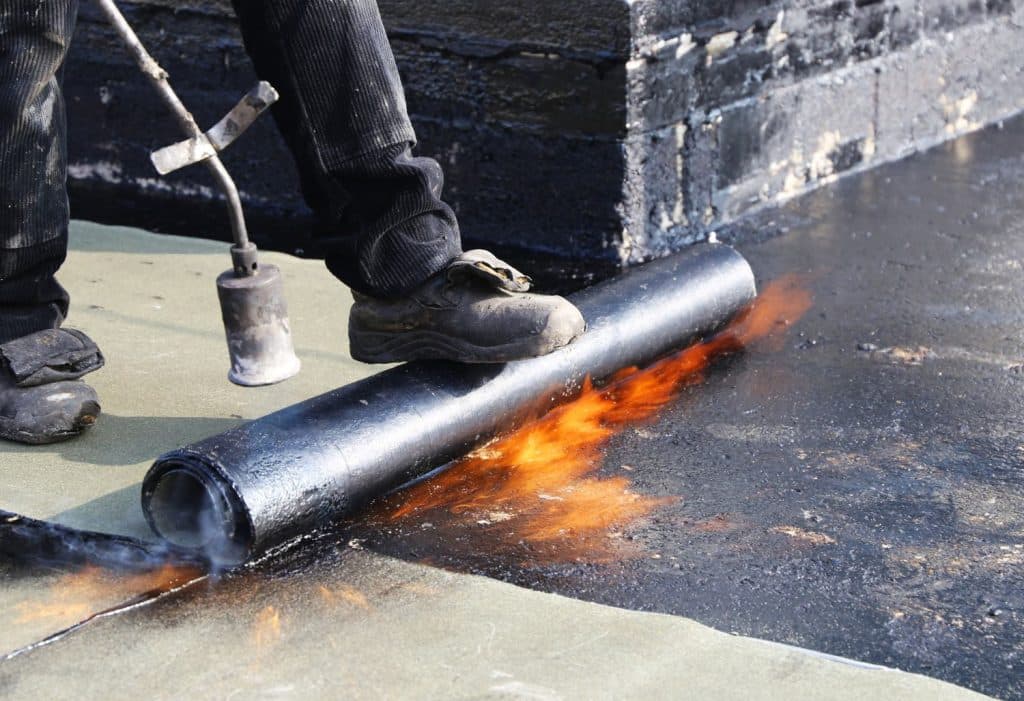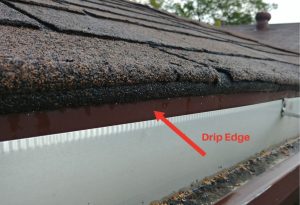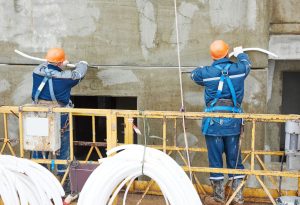Estimated Reading Time: 10 minutes
Key Takeaways
- Torch on membranes use heat application for superior adhesion and seamless waterproofing
- Ideal for flat roofs, providing 15-25 years of reliable protection when professionally installed
- Heat-applied bitumen creates stronger bonds than self-adhesive alternatives
- Professional installation essential for safety and optimal performance
- Cost-effective long-term solution for commercial and residential properties
- Multiple layers provide enhanced durability against Gauteng’s extreme weather conditions
When protecting your property from water damage, selecting the right waterproofing membrane can determine whether you enjoy decades of peace of mind or face recurring leak issues. Torch on waterproofing membranes have emerged as one of the most reliable solutions for flat roofs and complex architectural surfaces across Gauteng’s challenging climate.
At TT Waterproofing, we’ve witnessed firsthand how torch on membranes outperform other understanding different waterproofing membranes and their applications in demanding conditions. From the scorching summer heat to heavy seasonal downpours, these heat-applied systems create robust barriers that stand the test of time. Understanding how torch on waterproofing works, its applications, and installation requirements helps property owners make informed decisions about protecting their investments.
What Is Torch On Waterproofing?
Torch on waterproofing involves applying modified bitumen membranes using controlled heat from a gas torch. This process melts the underside of the membrane, creating a molten bond with the substrate that hardens into a seamless, watertight seal. Unlike self-adhesive membranes that rely on pressure-sensitive adhesives, torch on application creates mechanical and chemical bonds that resist delamination.
The membrane itself consists of a polyester or fibreglass reinforcement core saturated with modified bitumen. This combination provides flexibility, tensile strength, and resistance to temperature extremes. The torch application process ensures complete adhesion across the entire surface, eliminating air pockets and weak points that could compromise the waterproofing system.
Professional contractors control flame temperature and application speed to achieve optimal melting without damaging the membrane or underlying structure. This precision requires extensive training and experience, making torch on waterproofing a specialist application best handled by qualified professionals.
Torch On Installation Timeline
A typical torch on waterproofing project follows this structured approach:
Day 1-2: Surface preparation, cleaning, and primer application
Day 3-4: First membrane layer application with careful seam overlap
Day 5: Second layer installation and quality control testing
Day 6: Final inspections, cleanup, and system handover
Weather delays can extend timelines, particularly during Gauteng’s rainy season from October to March.
Applications and Benefits of Torch On Membranes
Flat Roof Waterproofing Excellence
Flat roofs benefit tremendously from torch applied membrane systems. The heat application creates superior adhesion on horizontal surfaces where gravity doesn’t assist with water runoff. Multiple membrane layers can be applied to create redundant waterproofing systems that provide exceptional reliability.
Commercial buildings, apartment complexes, and modern residential designs with flat roofing systems rely on heat-applied membrane systems for long-term protection. The seamless application eliminates vulnerable seams and joints that plague other waterproofing methods.
Superior Weather Resistance
Gauteng’s climate presents unique challenges with intense UV radiation, significant temperature fluctuations reaching extreme highs in summer and freezing conditions in winter, plus seasonal storms bringing substantial rainfall in concentrated periods. Heat-applied membranes excel in these conditions through their inherent flexibility and UV stability. The modified bitumen composition resists cracking from thermal expansion and maintains elasticity across temperature ranges.
During Johannesburg’s notorious afternoon thunderstorms, heat-fused membranes create continuous barriers without mechanical fasteners or seams that could allow water penetration. This seamless protection proves invaluable when facing Gauteng’s seasonal rainfall concentrated in the summer months.
Durability and Longevity
Professional installations of quality heat-applied membranes typically provide 15-25 years of reliable service. This longevity stems from the robust construction and superior adhesion achieved through torch application. The reinforcement core prevents tearing while the modified bitumen resists degradation from environmental exposure.
Maintenance requirements remain minimal compared to other roofing systems. Periodic inspections and minor repairs can extend service life even further, making heat-applied membrane systems cost-effective over their operational lifespan.
Torch On vs Alternative Membrane Systems
| Feature | Torch On | Self-Adhesive | Liquid Applied |
| Installation Method | Heat fusion | Peel & stick | Brush/spray |
| Bond Strength | Excellent | Good | Variable |
| Weather Dependency | High | Medium | High |
| Lifespan | 15-25 years | 10-15 years | 8-12 years |
| Installation Cost | Higher | Moderate | Lower |
| Maintenance | Low | Medium | High |
| Best For | Flat roofs | Simple shapes | Complex details |
Adhesion Strength
Torch on application creates superior bond strength through heat fusion. The molten bitumen penetrates surface irregularities and creates mechanical interlocking that self-adhesive systems cannot match. This enhanced adhesion resists wind uplift forces and thermal stresses more effectively.
Self-adhesive membranes rely on pressure-sensitive adhesives that may not achieve complete contact with textured surfaces. Temperature and humidity during installation affect adhesive performance, potentially compromising long-term reliability.
Installation Considerations
Professional torch on installation requires specialised equipment and extensive safety protocols. The open flame application demands careful fire prevention measures and skilled technique to achieve consistent results. Weather conditions significantly impact installation scheduling, as rain or high winds prevent safe torch application.
Self-adhesive membranes offer simpler installation procedures but require pristine surface preparation and specific temperature ranges for optimal adhesion. Cold weather can compromise adhesive performance while excessive heat may cause premature activation.
Performance Characteristics
Torch on membranes demonstrate superior performance in extreme temperatures and challenging weather conditions. The heat-fused bond maintains integrity through thermal cycling and mechanical stress. Self-adhesive systems may experience edge lifting or adhesion failure under severe conditions.
Cost considerations favour self-adhesive membranes for initial installation, but torch on systems often provide better long-term value through enhanced durability and reduced maintenance requirements.
Professional Installation Process
Surface Preparation Requirements
Successful torch on installation begins with meticulous surface preparation. Substrates must be clean, dry, and structurally sound before membrane application. Any loose materials, debris, or moisture compromises the bond quality and system performance.
Professional contractors assess substrate conditions and address deficiencies before proceeding with membrane installation. This may involve primer application, crack repair, or surface smoothing to ensure optimal adhesion conditions.
Safety Protocols and Equipment
Torch on installation involves significant fire risks that demand comprehensive safety measures. Professional teams maintain fire extinguishers, emergency protocols, and safety equipment on-site throughout the installation process. Hot work permits and coordination with building management ensure safe working conditions.
Proper ventilation systems remove fumes generated during the heating process, protecting workers and building occupants. Personal protective equipment includes flame-resistant clothing, respirators, and safety glasses to prevent injury from hot materials or fumes.
Quality Control Measures
Experienced contractors monitor membrane thickness, overlap consistency, and bond quality throughout the installation process. Temperature measurements ensure optimal heating without membrane damage. Seam testing verifies watertight connections between membrane sections.
Post-installation inspections identify any deficiencies requiring correction before system acceptance. Professional installations include warranties that provide confidence in the completed waterproofing system.
Cost Considerations and Investment Value
Investment Planning Factors
Torch on waterproofing represents a premium investment in property protection. Several factors influence total project costs including membrane quality, installation complexity, roof size, and accessibility challenges. Professional installation ensures optimal results and long-term value.
Premium materials command higher initial costs but deliver superior performance and extended service life. The investment should be evaluated against potential costs of recurring repairs and water damage prevention.
Building height, access challenges, and safety requirements influence labour costs. Complex roof configurations with multiple penetrations or architectural features increase installation time and material requirements.
Long-Term Value Analysis
Properly installed torch on systems deliver substantial value through extended service life and reduced maintenance requirements. The initial investment prevents costly water damage repairs and protects interior furnishings and equipment. Quality waterproofing also contributes to improved energy efficiency and enhanced property values.
Long-Term Value Proposition
While initial costs may exceed alternative systems, torch on membranes often provide superior long-term value through extended service life and reduced maintenance requirements. Energy savings from improved thermal performance can help offset higher installation costs over time.
Avoiding costly leak repairs and interior damage represents significant value that justifies premium waterproofing systems. Professional roof waterproofing services over DIY solutions provide warranties and ongoing support that protect the investment value.
Maintenance and Care
Inspection Requirements
Regular inspections identify potential issues before they compromise system performance. Professional assessments should occur annually and after severe weather events. Early detection of minor problems prevents major repairs and extends membrane life.
Inspection protocols examine membrane condition, drainage systems, and penetration seals. Documentation of findings helps track system performance and plan maintenance activities.
Preventive Maintenance Practices
Keeping drainage systems clear prevents water ponding that stresses waterproofing membranes. Regular cleaning removes debris that could damage the membrane surface or create moisture retention.
Professional maintenance programmes include minor repairs, seam inspections, and protective coating applications that preserve membrane integrity. These services represent small investments that yield significant returns through extended system life.
FAQ Section
How long does torch on waterproofing installation take?
Installation duration depends on roof size, complexity, and weather conditions. Most residential projects complete within 2-5 days, while larger commercial installations may require 1-2 weeks. Professional contractors provide realistic timelines based on project-specific factors and optimal working conditions.
Can torch-on membranes be installed over existing roofing?
Torch on membranes can often be applied over existing roofing systems, provided the substrate remains structurally sound and properly prepared. Professional assessment determines compatibility and identifies any necessary preparatory work. This approach can reduce installation costs while upgrading waterproofing performance.
What warranty coverage applies to torch-on waterproofing?
Quality torch on installations typically include manufacturer material warranties of 10-20 years plus contractor workmanship warranties of 5-10 years. TT Waterproofing provides comprehensive warranty packages with detailed coverage terms. Warranty validity requires compliance with maintenance schedules and annual inspections by qualified professionals.
How do I know if my roof needs torch-on waterproofing?
Key indicators include persistent leaks, membrane blistering, visible cracks, or systems approaching 15+ years of age. If you notice water stains on ceilings, damp spots after rainfall, or increasing repair frequency, professional assessment can determine if torch on replacement offers the best solution for long-term protection.
Protecting Your Investment with Expert Solutions
Torch on waterproofing membranes represent proven technology for long-term water protection across diverse applications. From flat roof installations to complex architectural challenges, these heat-applied systems deliver reliability that justifies their investment. Understanding the application process, performance characteristics, and maintenance requirements helps property owners make informed decisions about protecting their valuable assets.
At TT Waterproofing, our team combines over nine years of experience with commitment to excellence in every installation. Whether you’re planning new construction or addressing existing waterproofing challenges, we provide expert guidance and professional results that stand the test of time.
Ready to explore torch-on waterproofing solutions for your property? Contact TT Waterproofing today at 078 057 9663 or visit our contact page to schedule your consultation. Let our experienced professionals help you select and install the optimal waterproofing system for lasting protection.



